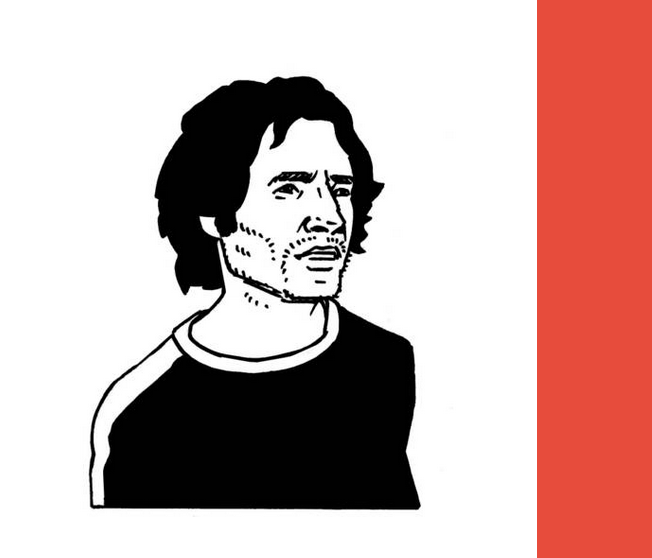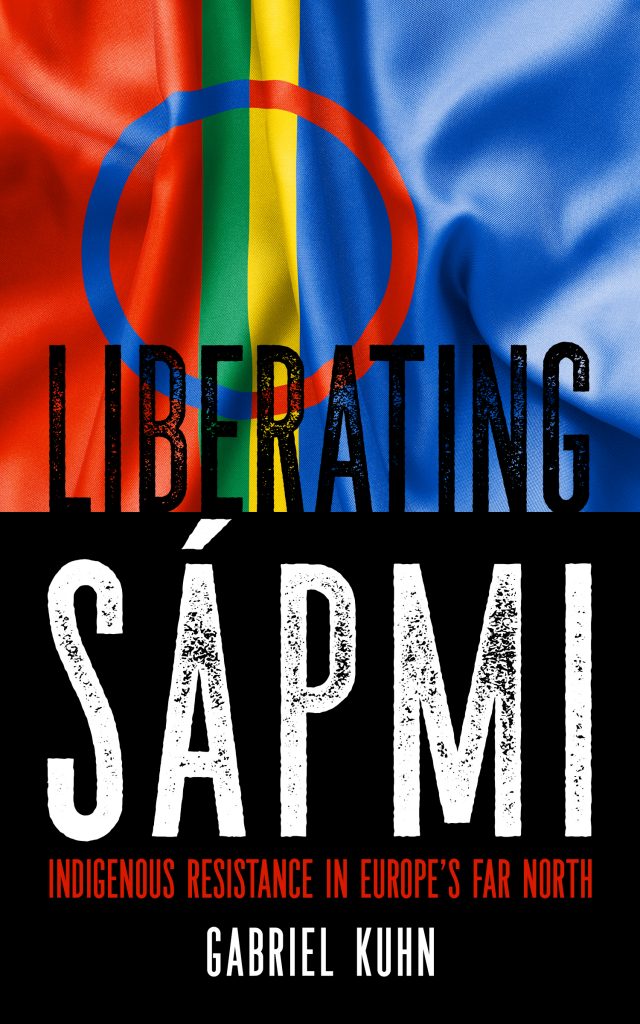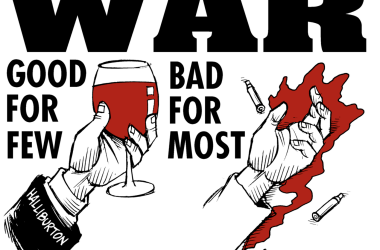By Gabriel Kuhn
Left Two Three
April 22nd, 2021
A review of Nick Estes, Melanie K. Yazzie, Jennifer Nez Denetdale, and David Correia, Red Nation Rising: From Bordertown Violence to Native Liberation (PM Press, 2021).
Where to start? I was excited for this book for several reasons. One was a longstanding interest in the liberation struggles of Native Americans. At an early age, it was fueled by the romanticized images of Native American warriors so common in the German-speaking world. In high school, it transformed into political engagement, demanding from our English teacher to play Floyd Westerman records as part of our language training. Eventually, it brought me to Arizona, where I attended classes in American Indian Studies and learned more about the Diné (Navajo) and Hopi nations, and to Pine Ridge, where I traced the activities of the American Indian Movement in the 1970s.
Another reason that intrigued me about the book was the title. I grew up in what we call a Grenzort, literally a “border location.” In this case, a small village in the Austrian Alps, right by the German border. All we had to do to get to Germany was walk across a bridge over the river Inn. In a 2005 article, I described the situation thus:
“Luckily, as I see it today, the economic differences between the two countries were negligible at the time, so the consequences of living in a border town were mainly positive for us villagers: we had easy access to another country, its jobs, goods, services, media, cities, and never felt like going to Germany was going to a ‘foreign’ land. But, like I said, we were fortunate that we were at a border of relatively little economic significance. It meant that we didn’t have to deal with many of the problems connected with border towns where the meaning of a political border actually becomes manifest, since the people of a rich nation have to ‘protect’ themselves against the people of a poor nation, while the people of the poor nation have to risk their lives (in various ways) near, around, and across, the border as an economic necessity. Unsurprisingly, such border towns usually become hazardous locations: places of organized crime, human trafficking, para-militaristic border control, corrupt government officials, cheap bars, brothels, and junk shops, reckless entrepreneurs of all sorts attracted by the supposed possibility of making a quick buck.”
Reading Red Nation Rising: From Bordertown Violence to Native Liberation, authored by Nick Estes (Kul Wicasa), Melanie K. Yazzie (Diné), Jennifer Nez Denetdale (Diné), and David Correia, made me revisit this passage for the first time in years. It is clear that I used “border town” in what the Red Nation Rising authors would call its “common” usage, that is, as a term that “describes the cities and towns along recognized international borders.” While what I described as “hazardous locations” might echo what the authors describe as “white-dominated settlements that ring Indian reservations and give spatial form to the violence and exploitation that defines everyday Native life,” they use the term for something much larger: “The bordertown,” they write, “is not just a place. It is a relation where the contradictions of settler colonialism emerge and show themselves to all. … This is why we render it as one word. It is a bordertown, not a border town. Why? There is no objectively innocent spatial form in a settler world that we might call just a ‘town.’ Rather there is only the spatial expression of the settler project – borders, violence, and police. Every settler town is a bordertown.”
Red Nation, Native Liberation, Kinship
This is the conceptual framework for a powerful read. The first three pages describing the brutal murder of Zachary Bearheels of the Rosebud Sioux Tribe at the hands of Omaha, Nebraska, police officers are hard to get through. Everyone with half a heart will feel devastated. These pages set the tone for a series of tales that hammer home the point that the USA is a society of “Indian killers,” of cops trained to “hunt,” of settlers who constitute violence “as the guiding logic and value of all social relations.” It is unsettling, infuriating, and yet, thanks to a remarkable collective writing effort, energizing.
The book opens with a preface by Radmilla Cody and Brandon Benallie, who recall another chilling murder of Native Americans, the Diné men Allison Gorman and Kee Thompson, who were beaten to death by a group of teenagers in Albuquerque, New Mexico, in July 2014. As Estes, Yazzie, Denetdale, and Correia write, The Red Nation, a Native-led revolutionary organization they are affiliated with, formed on the heels of these murders. On its website, The Red Nation describes itself as “dedicated to the liberation of Native peoples from capitalism and colonialism.” The site features a “10 Point Program,” educational material, and podcasts. (Go visit!)
Red Nation Rising is divided into eight chapters, most of which are organized along key terms. Under “Anti-Indianism” (chapter 2), you will read about “Indian Country,” “Urban Indian,” or “Poverty.” Under “Settler Scams” (chapter 6), you’ll encounter “Property,” “Sacred Sites,” “Tourism,” and more. The final chapter is titled “Don’t Go Back to the Reservation: A Bordertown Manifesto.” The book has all the scholarly qualities you could ask for, but it is not bogged down by academic jargon or pretense. A real treat.
The politics are radical. “The bordertown cannot be reformed and settler society cannot be redeemed.” “Anti-colonial struggles are the strongest forms of class struggle.” “The abolition of private property must be our shared goal if we are to have any hope of a future.” “Bordertown justice envisions a world without borders.” Native liberation is presented as “the path toward planetary freedom,” resting on principles of Haudenosaunee kinship: “personal dignity, equality, freedom and autonomy, fraternity, matriarchy, and the absence of poverty.”
What’s a Settler Gonna Do?
From a purely personal perspective, the straight edge author in me appreciated the nuanced reflections on alcohol and alcoholism. It was also nice to see A Tribe Called Red referenced, a First Nations DJ collective that has collaborated with Sámi artist Maxida Märak, who was one of the people I interviewed for the book Liberating Sápmi: Indigenous Resistance in Europe’s Far North. When Maxida joined me for a program on the Final Straw podcast, she referred to Tim “2oolman” Hill of A Tribe Called Red as one of her “closest friends.”
Red Nation Rising raised a few analytical questions for me, mainly related to settlerism, white supremacy, and bordertowns. I wonder whether the authors would think that I was raised in a “border town,” due to the absence of an indigenous population on those lands, or whether it was still a “bordertown,” as any European town is so intrinsically tied to colonialism and white settler societies that any such distinction would only cover up the complicity. Then again, these might be questions so technical that they only distract from the one no leftist can dodge, Leninist or not: “What is to be done?”
A declaration in Red Nation Rising that stood out to me was: “We are building a liberated society, and there is no place in it for the ‘settler.’” This can mean two things. One, settlers will physically disappear. Two, if they won’t, they will have to become part of a project that eliminates the settler status, which can only happen through the elimination of the settler society – akin to the project of eliminating class society (and classes) to make way for a classless one.
How do settlers become part of such a project? Can they? There is the perennial instinct to demand from those who suffer under an oppressive regime to point out for those who profit from it how the latter could become better people (or at least ease their conscience). There is none of that in Red Nation Rising, as it is not the authors’ responsibility to do any such thing. These are issues that need to be resolved in common struggle.
Whether it is enough to be an “ally” is questionable, and, judging from the Red Nation Rising authors’ reflections on “Solidarity/Alliance” (chapter 7, “Burn the Village”), they seem skeptical as well. They mention the term “accomplice,” which some folks see as implying “stricter criteria for who engages in allyship and more extreme measures for accountability,” but me, being old-school, I’m wondering whether we could simply aim at being good, solid “comrades.”
But let’s not get stuck with the words. The Red Nation Rising authors make an important distinction between “vertical” and “lateral” solidarity. They define “vertical” solidarity as something that “typically happens when a person or group with greater class, racial, or gendered privilege leverages their privilege to assist a group with lesser class, racial, or gendered privilege – an oppressed group.” A revolutionary would have to strive for lateral solidarity. For settlers, this seems impossible when the Red Nation Rising authors introduce it as a form of solidarity “between oppressed and colonized groups.” It doesn’t seem entirely impossible, however, when considering the following distinction:
“The primary difference between vertical solidarity and lateral solidarity is the focus: the first is on mutual support between struggles to build the power and capacity of large-scale liberation movements, especially in contexts where the petit bourgeoise and ruling class cannot be trusted or entreated to support these movements, because these movements are advancing a full revolutionary program to overthrow class hierarchy. The second type of solidarity focuses on asking (sometimes begging) for resources and concessions from petit bourgeois and ruling-class individuals like celebrities, philanthropists, politicians, and academics.”
Needless to say, the settler would have to shed their settler identity during this process, but they need the process to do so. Dialectics.
Flashback
During my high-school politicization, Vine Deloria Jr.’s God Is Red was one of the most influential books I read. (At the time, it was near impossible to get English-language books in the German-speaking world. Luckily, “Third World” publisher Trikont had released a German edition. Today, they are exclusively a record label.) While Red Nation Rising is, in many ways, a very different book (to begin with, it was written 50 years later), it often made me think of God Is Red. Reading either book doesn’t necessarily make you a better comrade. But it’s giving you a chance.
Gabriel Kuhn is an author, translator, and union activist. He has published widely in English and German. His texts have been translated into more than a dozen languages.







